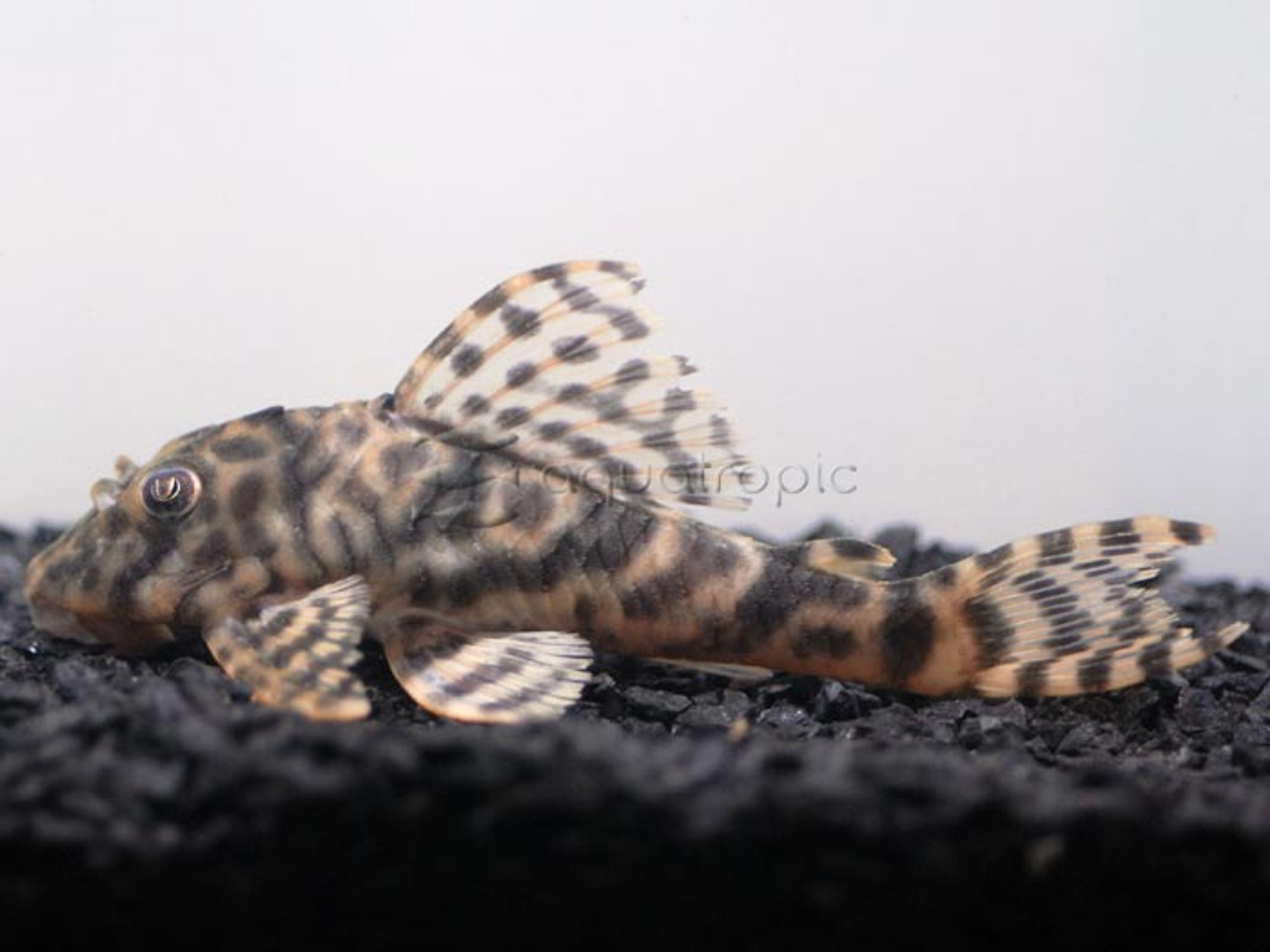Xingu Tiger Pleco (Peckoltia vittata L015)

The Xingu Tiger Pleco is an ideal armored catfish for smaller aquariums that grows to less than four inches in length and sports an eye-catching pattern of diagonal yellow and black stripes.
Peckoltia vittata (L015) was described in the late nineteenth century from the Rio Xingu of Brazil, but in recent years our understanding of this species has changed considerably, with several regional populations of striped Peckoltia described as new taxa in their own right. In 2010, the Leopard Frog Pleco (P. compta) was named from the Rio Tapajós. In 2015, the population from the Rio Gurupi, which flows directly into the Atlantic rather than the Amazon, was named P. greedoi (after Greedo in Star Wars). And most recent was P. wernekei in 2016, which calls the Rio Venturi in the Orinoco drainage home.
And so the Xingu Tiger Pleco has slowly gone from being one of the most widespread members in the genus to a somewhat narrowly distributed species. Researchers have suggested that each major river system in the Amazon is likely to represent a unique species, which may eventually lead to P. vittata becoming a true endemic of the Rio Xingu. This is noteworthy, as the Rio Xingu is one of the most imperilled riverine ecosystems on the planet thanks to the Brazilian government’s construction of the Belo Monte Dam. The famous Zebra Pleco (Hypancistrus zebra) and the gorgeous Sunshine Pleco (Scobinancistrus aureatus) are both restricted to this river, but perhaps so is the Xingu Tiger?
Aquarists can easily confuse this species with the nearly identical Leopard Frog Pleco, which differs in having “a pale line inside each dark stripe running from the snout tip to anterior margin of eyes (vs. absence of such clear lines and a mottled appearance in P. vittata.” Another frequently confused species is the common Clown Pleco (Panaqolus maccus), which is also small and striped, but that fish is easily told apart thanks to its far thinner stripes and broken facial markings. The diet of these two is also quite different (as evidenced by their differently shaped teeth), with the Clown Pleco being primarily xylophagous (i.e. wood-eating) compared to the omnivorous diet of Peckoltia.
As with the closely related Hemiancistrus, Peckoltia are not especially productive algae eaters and will readily feed upon meaty foods. A varied diet is recommended, comprised of the typical frozen invertebrate fare and algae pellets.
Breeding has been accomplished, and the sexes can be differentiated by the many odontodes present in the posterior half of males. Soft, acidic water will help to stimulate breeding, with eggs laid in caves or crevices and guarded by the male.